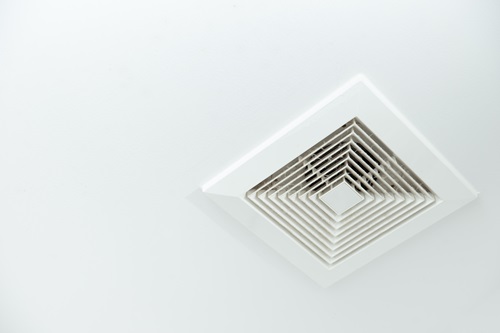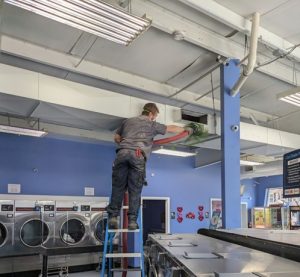 This summer has seen regular extreme heat warnings and new temperature records across many regions. Therefore, during these intense heat waves, your comfort depends on having an efficient air conditioning system. Many homeowners find that some rooms are cooler than others. So, the best way to prevent this from happening is to boost your HVAC airflow with an air duct booster fan.
This summer has seen regular extreme heat warnings and new temperature records across many regions. Therefore, during these intense heat waves, your comfort depends on having an efficient air conditioning system. Many homeowners find that some rooms are cooler than others. So, the best way to prevent this from happening is to boost your HVAC airflow with an air duct booster fan.
How Does an Air Duct Booster Fan Work?
In every air conditioning system, there is an arrangement of ducts to transport the air from your central unit into each room. Moreover, in large houses with extensive ducting, it’s normal for the vents closest to the blower to have a higher volume of air movement than the vents furthest away. As a result of this uneven distribution of air, you may have some rooms that feel stuffy and warm.
Once you’ve chosen the ideal temperature for your home, it’s frustrating when your HVAC system can’t deliver an even temperature to every room. Therefore, by analyzing your ducting system, you can identify where the airflow is insufficient. Additionally, installing an air flow booster will increase the volume of air to these problem areas and help ensure a consistent temperature in your home.
What Are the Different Types of Air Duct Booster Fans?
Both types of air duct booster fans essentially work in the same way. They pull additional air through the ducting to improve the efficiency of your HVAC. So, let’s look at each type in more detail to understand how they work and which type is best suited to your situation.
Inline Booster Fans
These cylindrical fans are installed within the ducting to pull air into several different rooms. Moreover, they are mostly used in large houses where a whole section of the house isn’t receiving sufficient cooling airflow. Furthermore, inline fans improve the airflow throughout your whole duct system and are a simple way to boost HVAC airflow.
Additionally, you’ll need to expose the ducting to install them and connect them to electrical power. By installing your inline fan in the roof ducting, you won’t hear any noise when it’s running. If you have a big house or double-story building, then an inline fan is the best way to pull more air through your HVAC system to reach the furthest points.
 Register Fans
Register Fans
Unlike inline fans, this type of booster fan is installed on the wall of your room. Moreover, they are generally used to target specific rooms with low airflow problems. Some register fans have a thermostat and speed adjustment control to regulate how much air they deliver. Additionally, you can connect a register fan to a plug in your room and don’t need to wire it back to the main HVAC unit.
So, this makes them easier and more cost-effective to install than inline fans. The only downside is the extra noise associated with having a fan in your room. If you only have one room with poor airflow, then a register fan is a good way to help maintain a consistent temperature in your home.
Common Issues Associated with Uneven Cooling and Heating
Before you install an air duct booster fan, it’s important to make sure that the rest of your HVAC system is operating efficiently. Additionally, a few common issues are often to blame for uneven cooling or heating in your home. So, if you don’t address these first, then a booster fan is unlikely to make much of a difference.
One of the biggest problems that cause insufficient airflow is having clogged air filters. Therefore, replacing your air filter is an easy way to improve airflow in your HVAC system. You should aim to replace your air filter every three months and clean it every month. Another common cause of poor airflow is the placement of your furniture in a room. So, if you’ve accidentally covered the air vents, this can reduce airflow and result in a hot and stuffy room. Check that your air vents are all free from any obstructions and have a clear path to circulate air in each room.
It’s also a good idea to check that your dampers are fully open. These fins are used to restrict the airflow into a room when you’re not using it. However, they can fall shut and become stuck in a closed position, which prevents air from blowing in. If your HVAC system in Knoxville TN is old, then there is a good chance that your ducting is leaking. As the adhesive on the duct tape dries out, the joints between your ducting begin to leak air. This greatly reduces the overall efficiency of your HVAC system as cool air escapes out of these gaps.
Why Hire a Professional
Hiring a professional HVAC contractor in Knoxville TN to install your air duct booster fan can ensure the job is done correctly and efficiently. Moreover, professionals have the necessary tools and expertise to analyze your HVAC system and determine the best placement for the booster fan. Furthermore, they can check for other issues in your system that might be affecting airflow and recommend solutions. Additionally, professional installation ensures that your booster fan is correctly connected to your electrical system, minimizing the risk of electrical hazards.
With summer temperatures reaching record highs, it’s important to keep your HVAC system running as efficiently as possible. When your air conditioning isn’t reaching all parts of your home, an air duct booster fan can make a huge difference to improve your airflow and keep you comfortable.
Ready to improve your home’s cooling efficiency? Contact J.C.’s Heating and Airl today to get air duct booster fan installation services.
Like our Facebook page for more great info about heating and cooling services.
Areas Served: Corryton, Fountain City, Halls Crossroads, Farragut, Powell, Knoxville, Knox County, Oak Ridge, Lenoir City


 Register Fans
Register Fans
